ACE’s Senior Fitness Specialist Program consolidates evidence-based best practices for those who train the active aging market. While there are three primary groups of people over 50 (fragile, healthy, elite), this article focuses on the healthy group—the independent, self-efficacious individuals capable of standing and walking. Part 1 of this series features a 30-minute workout that includes some of the best movements for improving physical and mental activities of daily life with the active aging population.
The following moves and games, which emphasize standing balance games for the lower and upper body and core, and can be completed in fewer than 20 minutes, enable you to expand the workout to a more comprehensive movement series. If any particular task proves too difficult, skip it and focus only on your client’s successes.
1. Side “X” Balance Reach (Frontal Plane)
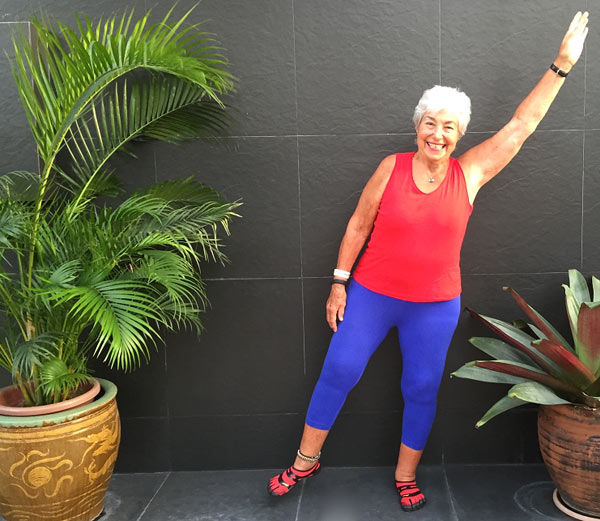
Stand on the left leg and lean the entire body toward the left. Abduct the left shoulder toward the sky and abduct the right hip just a bit so the right foot loses contact with the floor. The body makes half of an “X” shape. Touch down as needed with the right toes. Continue trying to balance on this side for up to two minutes and then change sides.
Game Guidelines: Try to be as still as possible when leaning to one side to make half of an X shape.
2. Stand and Twist
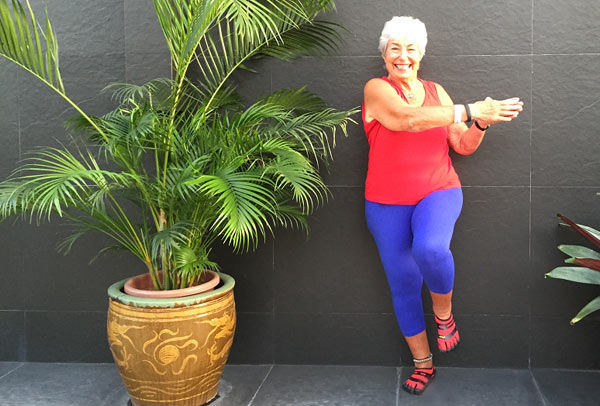
Part 1: “Stand.” Begin standing on the right leg and raise the left knee up until the upper thigh is parallel to the floor, if possible. If this is too difficult, raise just the heel of the left foot.
Part 2: “Twist.” Bring the hands together in a prayer position and then point the fingers forward, away from the body. Twist to the right and left making a large infinity design with the hands.
Game Guidelines: Try to twist as far as possible, following the hands with the eyes, head and core, while simultaneously keeping the lifted right knee as still as possible. Repeat on the other side after two minutes.
3. Raised Hinge
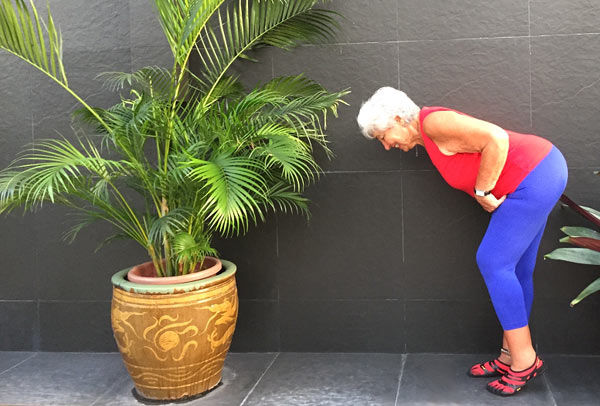
With the feet placed about hip-width distance apart, raise the left heel to create a stability challenge by decreasing the contact points with the floor. With the hands at the hips, slowly fold forward over the hands, flexing at the hips but not at the spine. Keep the spine as extended as possible. Flex the knees if the hamstrings are tight.
Game Guidelines: Hinge and “bow” down and up like a “drinking bird” slowly for one minute and repeat with the other heel raised, concentrating on keeping the spine long and strong.
4. Squat and Twist
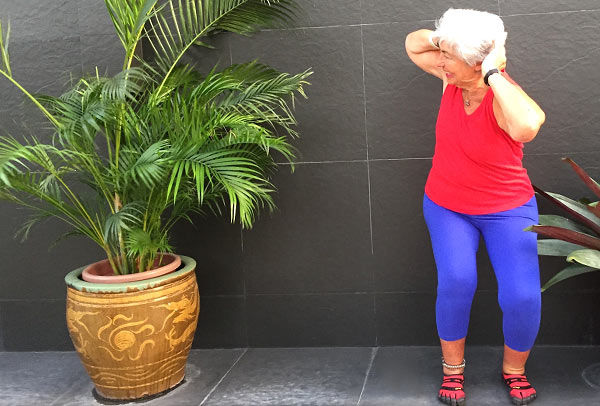
Part 1: Start with the feet set hip-width-distance apart. Lower to a sitting position; try to keep the toes within view to minimize how much the knees project forward. For a regression, lean against a wall while lowering, being sure to start with the feet far enough away from the wall so that the knees stay behind the toes in a lowered position.
Part 2: Bring the hands behind the head so the elbows are flexed, pointing to the sides in the frontal plane.
Game Guidelines: Try to keep the spine as extended as possible while twisting to the left and right several times in one minute. Take 10 full seconds to rotate to the left and right sides, and repeat five more times to make one minute. Return the starting position to rest by shaking the legs, and repeat for one additional minute.
5. Active Lat Stretch: Reach for the Sky
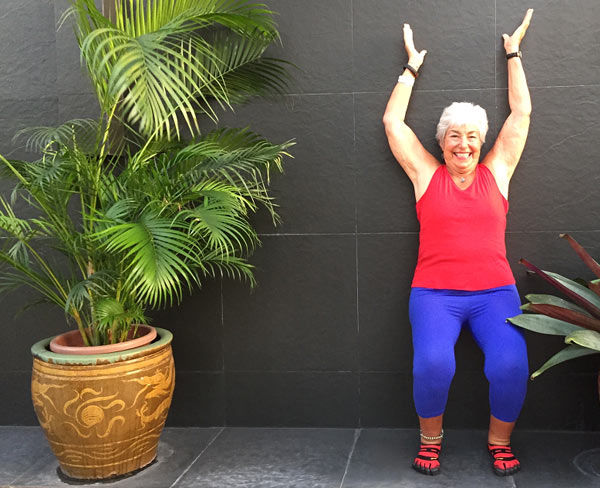
Sit back into the squat position described in the squat and twist exercise, using the wall for support. Slide the arms and thumbs up and down the wall slowly for one minute.
Game Guidelines: Try to feel the stretch from the hips all the way to the shoulders, reaching the fingers closer to the sky each time. The up-and-down movement should not be performed faster than 10 seconds.
6. Standing Twisting Lunge 1 and 2
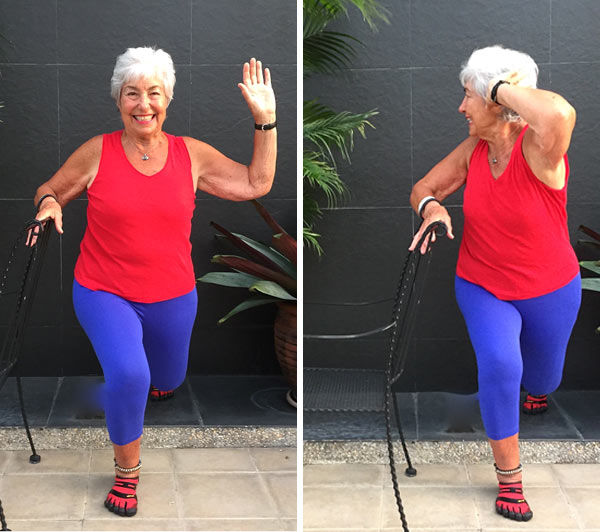
Part 1: Place a chair to the side for support, if needed. Start with the feet together and step forward with the right foot to try to bring the right upper thigh parallel to the floor. Find stability before progressing to part 2.
Part 2: With the left hand behind the head and the elbow flexed and pointing to the side (as in the Squat and Twist), twist the entire core to the right, trying to keep the spine as extended as possible.
Game Guidelines: After holding one lunge position for five seconds, untwist and return to the starting position with the feet together. Repeat on the same side as many times as possible with control for one minute, and then repeat the lunging on the other side following the same guidelines.
7. Standing “X” Skating Balance Reach in the Sagittal Plane
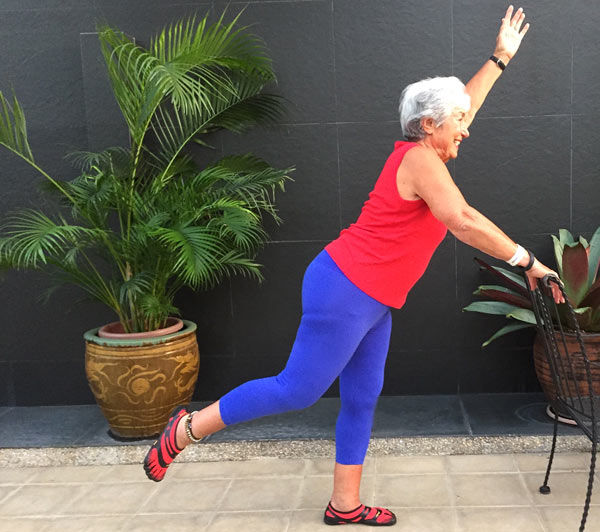
Stand with the feet about shoulder-distance apart with a chair in front for support, if necessary. Flex the left shoulder forward and up and simultaneously extend the right hip, making a contralateral half of the letter “X.” As a progression, ignore the chair. Slowly lower to a starting position and repeat on the other side. Continue this movement for up to two minutes, moving slowly and deliberately as if moving through peanut butter.
Game Guidelines: Try to keep the spine as neutral as possible when leaning forward from the supporting ankle and returning to a standing position. Each lifting and lowering can take 10 seconds per side; it may feel like “ice skating” in super-slow motion.
8. Bonus Move: Plank Position with Lifted Hand
Game Guidelines: Begin in a hands-and-knees position; walk the hands out to a plank position, either on the toes or knees. Try to say the alphabet backwards as fast as possible or count backwards by threes from the number 50. In addition to acting as a neuroplasticity drill (defined in the first blog), this exercise also serves as a “talk test” to ensure proper breathing while maintaining an isometric position of stability. Try to raise one palm, keeping the fingers on the floor. Alternatively, as pictured, raise one hand completely off of the floor for half of a second, regain stability on both hands in the plank position, and then raise the other hand. Repeat this balance game for up to one minute as appropriate.
Performing these stabilizing moves, either alone or in combination with the exercises presented in part 1, can help active agers achieve a better sense of balance, strength and overall self-efficacy. Remembering that balance means more than just standing on one leg helps put into place all of the moves suggested here in a variety of planes and positions. Ultimately, the goal as we age is to keep training both stability and mobility to maximize activities of daily life.
 by
by 




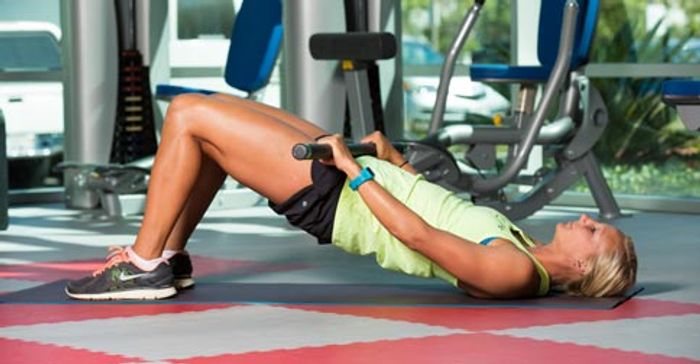
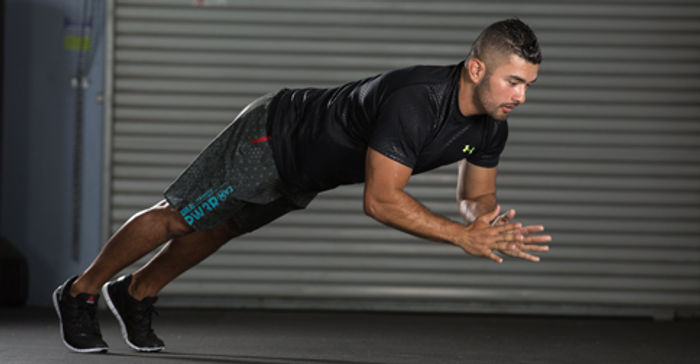
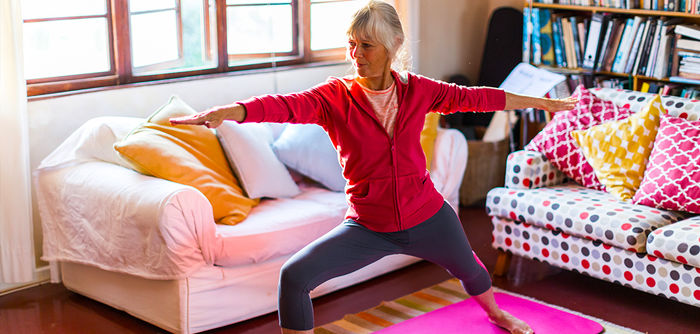

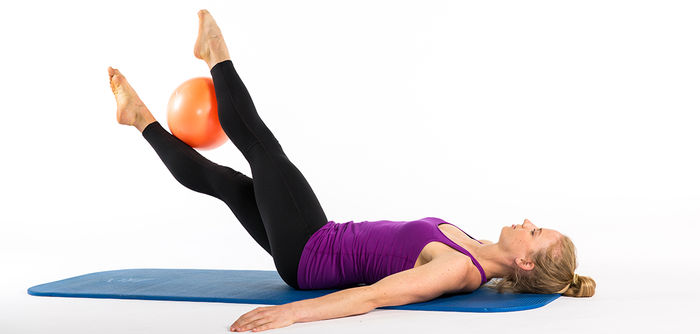


 by
by